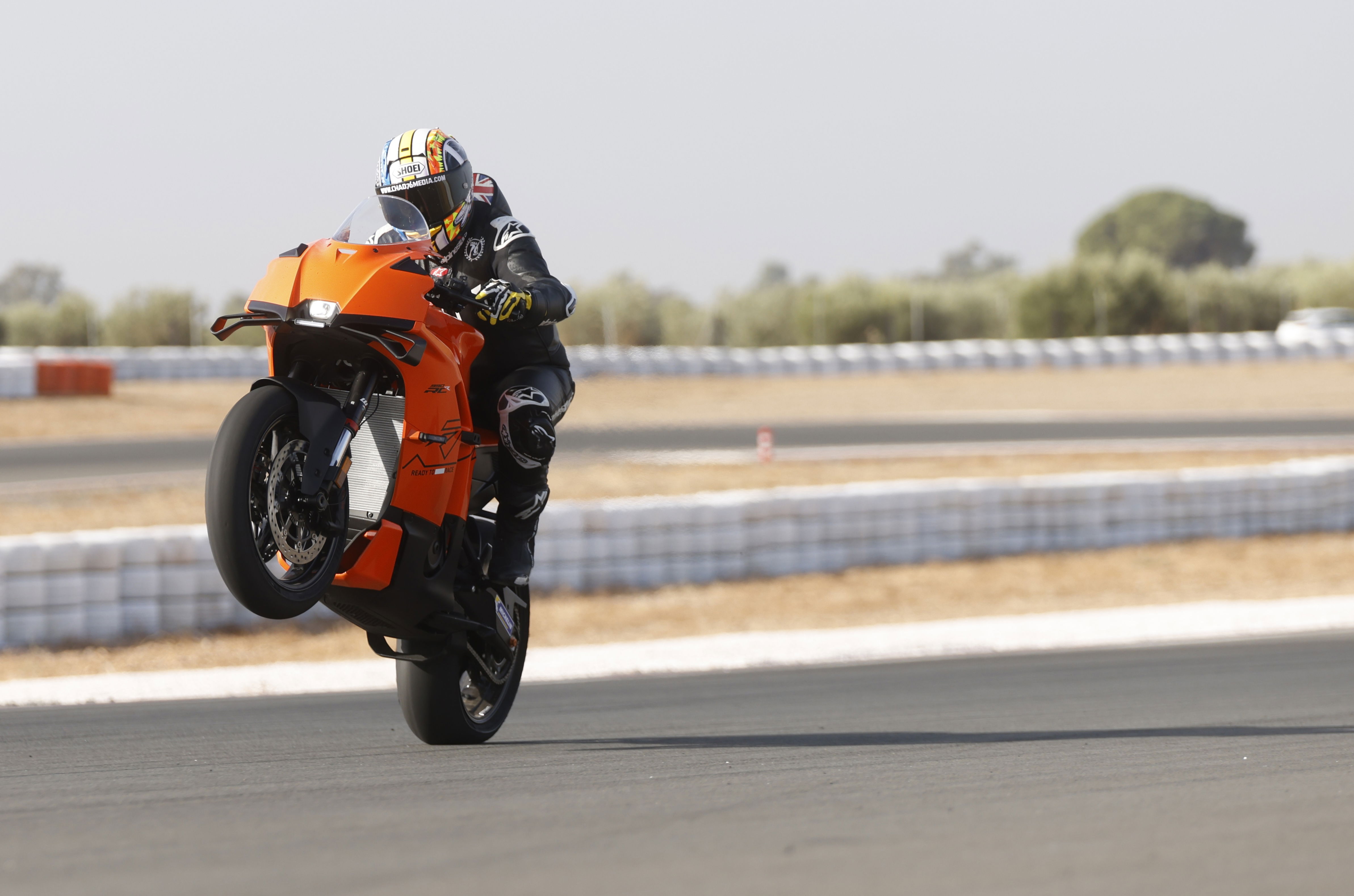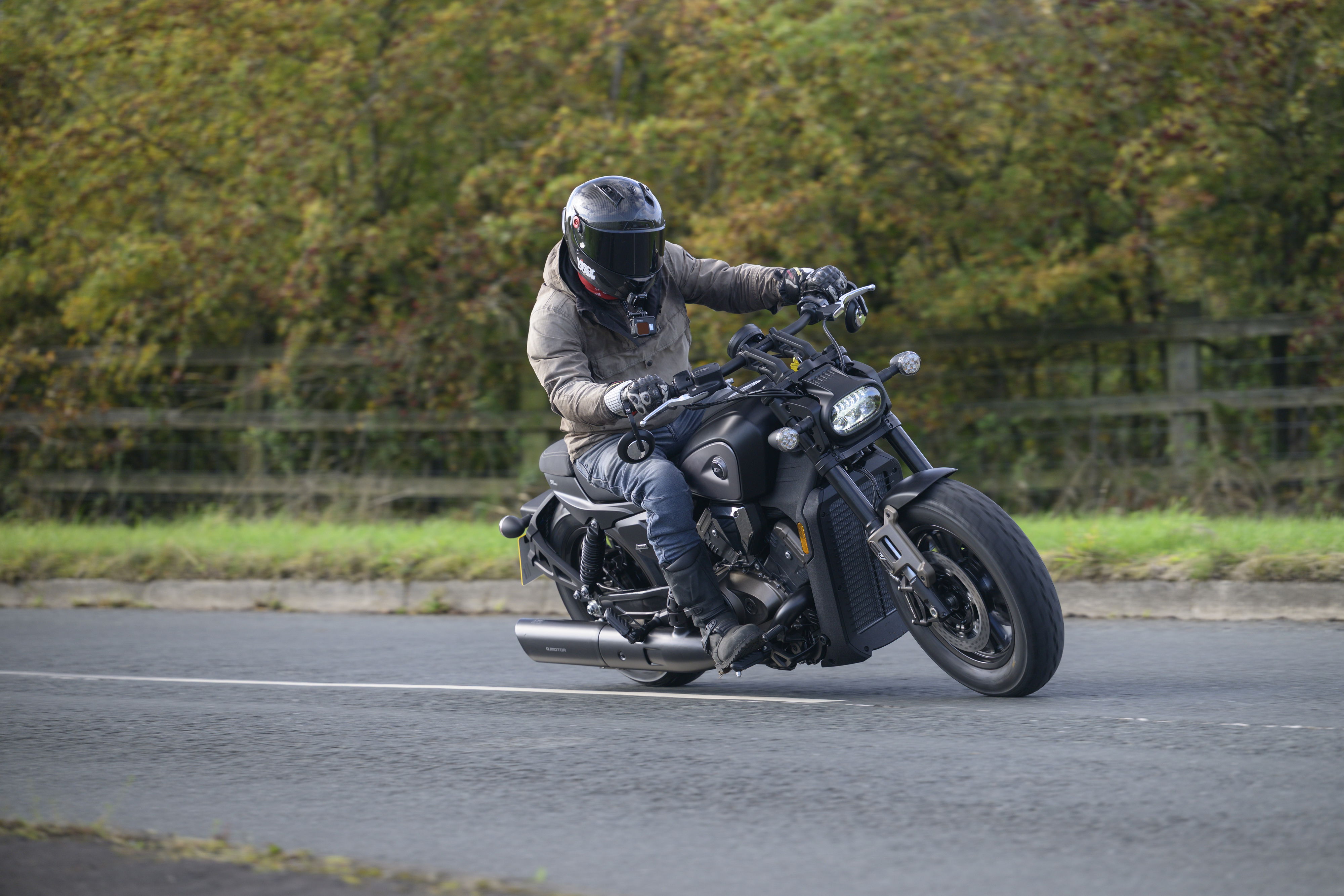2009 GSX-R1000 K9 review
The 2009 GSX-R1000 K9 is the darkest of dark horses, with pretty much every component of the motorbike revised and refined.
.jpg?width=1600&aspect_ratio=16:9)

You could be forgiven for thinking very little has changed with the latest 2009 GSX-R1000 K9 from Suzuki. Think again.
After a passing glance at the NEC show, and with the R1 stealing all the media hype, I for one spent the winter assuming nothing much had changed bar some new graphics and the re-styled exhausts, but I couldn’t have been more wrong.
With the exception of maybe the front mudguard, this bike is all-new from the ground up. Welcome then to the 2009 GSX-R1000 K9, the darkest of dark horses.
I’m not sure if it was intentional but Suzuki has somehow managed to build a completely new motorcycle whilst keeping the changes so subtle you could easily mistake the new bike for the K7 K8 model.
I’ve attended launches when manufacturers have claimed "45 changes", only to reveal that 40 of them were the different engine studs. Not this time – the new 1000cc GSX-R has been revised everywhere.
Related: 2009 GSX-R1000 review
The tank, seat, fairing, wheels, engine, exhausts, suspension, electronics and dash are all new, making it quite the revelation of 2009.
With 1000cc sportsbikes now making more power than most riders can use, manufacturers are less interested in top speed and are nowadays concentrating much more on making their bikes user-friendly and safe to ride.
Yamaha claim to have achieved this with their MotoGP-inspired cross-plane crank, whereas Suzuki have gone done a more conventional route by chopping 5kg off the previous model’s overall weight, while also making major improvements to handling and grip.
The weight loss comes mainly from a lighter engine, chassis, suspension and wheels which, together with the 10mm shorter wheelbase to give the bike a more agile feel.
The improved grip comes from a much more compact engine, which allows a longer swingarm to be fitted, in turn improving traction and boosting rider feel.
Up front the new 43mm Showa big-piston forks do a good job keeping things stable at high speed, coping with bumps well and remaining planted in tighter corners. This type of fork is very lightweight but some suspension experts are already saying its method of construction may make it more susceptible to damage in the event of a crash.

On the subject of suspension, the lightweight titanium-coated forks now have the compression and rebound damping adjustment nicely placed on the top of the fork, which is great except the preload adjustment has moved to the bottom so you'll still have to roll around on the floor at some stage.
And while I'm moaning, although it only takes two minutes, you now have to remove a nicely moulded side cover to get at the rear suspension damping adjusters (holes will have to be bored) and can we have a nice remote preload adjuster (as found on the R1) next time instead of knuckle-skinning castellated nuts please?
The heart of the K9 GSX-R is the new 999cc shortstroke motor, which is now more compact due to the 1998 R1-style stacked gearbox, now all but standard issue on four-cylinder sportsbikes.
Peak torque and power figures are exactly the same but there are numerous changes, many aimed to allow extra tuning for racing performance.
Stronger pistons, bigger valves (now with dual springs), new camshafts plus a new crankshaft with a more efficient lubrication system are some of the features that give this engine the potential to make more power and rev harder while staying totally reliable.
The adjustable slipper clutch has also been improved and is now operated with a cable to give more feel than the previous hydraulic system. Internal primary and secondary ratios have been changed resulting in the overall gearing being one tooth shorter.
Other engine improvements include shorter throttle bodies, a more advanced ECU and a trapezoidal oil cooler for better heat dissipation.
The Tokico front brake callipers are now a monobloc design and, though they nestle neatly in their mountings, they're nowhere near as pretty as the Brembo equivalents. The front discs remain 310mm in diameter and the Nissin radial master cylinder is fully adjustable. The rear brake caliper is now much smaller and is matched to a 210mm disc.
Unlike the most recent Fireblade and R1 there is no radical change of look for this K9 machine. The new lights and exhausts are pretty much all there is to it.
I do like the dash however, or as Suzuki call it 'the visual communicator' – my new favourite term. This instrument cluster is by far the best from Suzuki to date.
Most of their previous clocks have been pretty uninspiring. This time the visual communicator is much more stylish with a clear display for everything from the sequential shift lights, the power mode selector (your choices remain A, B or C) and the bigger, softer digital display ‘communicating’ speed and gear ratio. The three-stage power mode selector (still can’t see the point) is now on the left handlebar with the instrument control (including lap timer) switch on the right.

Should you buy the GSX-R1000 K9 (2009)?
Incredibly, from the first right-hander, the big Suzuki was happy to weave its way up and down through the next 10 corners in second gear. With the slowest corner being 40mph and the fastest 110mph this was truly impressive and as I mentioned earlier, on circuit at least, the throttle to rear wheel connection was faultless. Even when the standard BT-016 road tyres were past their best I could easily feel the rear moving around both on corner entry and exit.
If I were to take a calculated guess I would say the new R1 probably takes this a stage further giving even more feel which would definitely benefit less experienced riders. Also, with the R1's power delivery being softer and more linear I’d imagine the Yamaha will be easier on tyres but I’m guessing so we’ll have to wait for myself and Whitham to give them a good trashing on the imminent group test.
After a time though, the standard suspension settings proved just too soft, delivering too much squat on acceleration and unsettling the bike through changes of direction. Initially I added 2mm more preload front and rear, which improved the weight transfer considerably, and later added 2 clicks of low-speed compression damping to the rear which made things even sweeter. Quite often small changes are difficult to feel on standard suspension so I was impressed that I could feel an improvement.
I once saw a very capable rider get wiped out on an out-of-control ZX-10R on Almeria's straight so I know the fast, uphill undulations are the ultimate stability test. The Suzuki was rock solid. Later I was looking up for my braking point with the speedo showing 180mph in fifth and without a wobble.
On the brakes there’s a little too much dive but a really positive return to the forks. And although the rear tyre tended to wander the front didn’t which, taking nothing away from Bridgestones, tells me the new forks are something special.
The K9 GSX-R1000 is not as good looking as the Fireblade and it doesn’t have the technical innovation of the R1, but when it comes to performance I think all three will be close without being copies of each – right now we truly are spoilt for choice.

2009 GSX-R1000 K9 specs
- Price: £9800
- Engine: 16-valve, inline four, 999cc
- Power: 180bhp @ 12,000rpm
- Torque: 86lb.ft @ 10,000rpm
- Front suspension: 43mm Showa big-piston forks, fully adjustable
- Rear suspension: Monoshock, fully adjustable
- Front brake: 310mm discs, four-piston calipers
- Rear brake: 220mm disc, single-piston caliper
- Wet weight: 203kg
- Seat height: 810mm
- Fuel capcity: 17.5 litres
- Top speed: 185mph (est)
- Colours: Blue/White, Black
Visordown rating: 5/5











